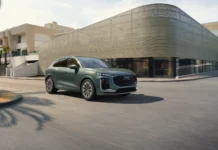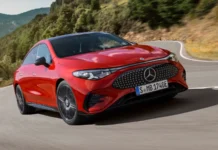
New York City Mayor Bill de Blasio announced plans to ban cars in Central Park from this June. But which other cities have gone further?
Here in the U.S., we largely view the car as a symbol of personal freedom. There’s something about being able to just hop in your car and drive that feels liberating. At least that’s the ideal scenario – cruising down the open road, sun shining, with your stereo blasting your favorite tunes. When it comes to city driving, however, the picture’s a bit less rosy. Traffic, noise, stress…pollution. City governments are really honing in on that last bit, as gasoline and diesel engines have created enormous air pollution problems in cities for years. Not to mention the safety issues cars create, running so close to throngs of pedestrians.
Now, the mayor of New York City is moving to ban cars completely from Central Park as of June 27, 2018:

Now, New York won’t ban cars on a wide scale in the near future. But while we’re on the subject, other cities are taking steps to ban cars, at least in their city centers, in the coming decades. Instead, city governments are investing heavily in pedestrian and bicycle infrastructure. They’re also encouraging the use of public transport rather than bringing your own car. Here are 10 cities that are making moves to ban cars or largely restrict their presence in the coming years, aggregated by Business Insider:

10. Chengdu, China
We kick off the list with something a bit different from the rest of the cities on this list. Chengdu is a Chinese city with a population of 14.4 million, not counting outlying areas. However, Chicago-based architecture firm Adrian Smith + Gordon Gill designed an 80,000-inhabitant satellite city 10 miles from Chengdu’s center. Residents will live and work within a half-square mile area. That way, they can walk anywhere else in the city within 15 minutes, so they don’t need cars. The city satellite city will still connect to the main city via train and mass transportation. The original plan was to build the area by 2020, but zoning issues are hampering that effort.
9. Berlin, Germany


8. Copenhagen, Denmark
Bikes are a big deal in Denmark. So much so that half the population rides a bike to work every day, rather than commuting by car. Copenhagen introduced bike lanes way back in the 1960s, and they have over 200 miles of bike lanes. Not only that, but the city already has the lowest percentage of car ownership anywhere in Europe. As part of a pledge to become completely carbon-neutral by 2025, Copenhagen needs to discourage cars even further. To that end, they’re completing 11 bike superhighways stretching to the outer suburbs by the end of this year, and at least 17 more are coming.

7. Madrid, Spain
Madrid aims to completely ban cars from a 500-acre span of its city center by 2020. That’s about three-quarters of a square mile, and city planners are working to redesign two dozen streets in the city center. Madrid is in the process of enacting a “sustainable mobility plan”, wherein they aim to reduce car usage by at least 6% in the near future. From the point bans are enacted, drivers who ignore them will pay a heftier fine, and will be forced to pay for heavily-polluting cars.

6. Brussels, Belgium
Brussels, the heart of the European Union, has long been pedestrian-friendly. To that end, streets around the city square, stock exchange, and other landmarks have always been blocked to cars. In fact, the city has the second largest car-free zone in Europe, behind Copenhagen. This year, Brussels started banning diesel cars built prior to 1998. In the summer, the city will make public transport free on high air pollution days. For one day every September, cars are completely banned from Brussels’ city center.

5. Bogotá, Colombia
In a weekly event called Ciclovía, Bogotá closes 75 miles of its roads to car traffic. It started back in 1974, and affects people driving on the city’s roads for one day each week. As with Copenhagen, Colombia’s capital city also has over 200 miles of bike lanes. Back in 2013, they also implemented a plan to push cars off the road depending on whether they have even or odd license plates on certain days of the week.

4. London, UK
Have you heard of a congestion charge? Londoners certainly have, and they have to fork over their money every time they want to drive a car into the city center. Right now, the charge is around $16.10 per day to drive into congestion zones on weekdays. Going even further, the mayor of London aims to ban diesel cars from the entire city by 2020. Britain as a whole wants to ban the sale of new gas and diesel cars from 2040, to combat its air pollution dilemma.

3. Oslo, Norway
Norway plans to ban all fossil-fueled cars by 2025. However, Oslo is beating the rest of the nation to the punch by six whole years, banning cars from its city center by 2019. As of next year, cars won’t be able to drive in the city center anymore, but Oslo will invest heavily in redesigning 35 miles of roads to bike lanes to compensate. Public transport will also see heavy investment, as well.

2. Paris, France
Paris has dabbled with banning cars with even or odd-numbered license plates from driving in the city center back in 2014. When they tried it, pollution levels reportedly fell by 30%. Seeing such dramatic results, the city government went one further. In July 2016, they completely banned cars built before 1997 from driving in the city center during the week. If Parisians drive their old clunkers into the city center, they face potential fines, although they can drive in the city center on weekends. Paris also plans to enact more “car-free days”, build more bike lanes, and switch some streets strictly to allow electric cars by 2020.

1. Mexico City, Mexico
Mexico City has a huge metropolitan area, home to about 20 million residents. By extension, there are also millions of cars on the road. Back in 2016, the city government made the decision to force 40% of cars off the road to combat smog. For two days every week and two Saturdays each month, certain cars are disallowed from driving in the city. They use a rotating system based on your license plate number to determine when you can drive. The move affects about two million cars at any given time.























